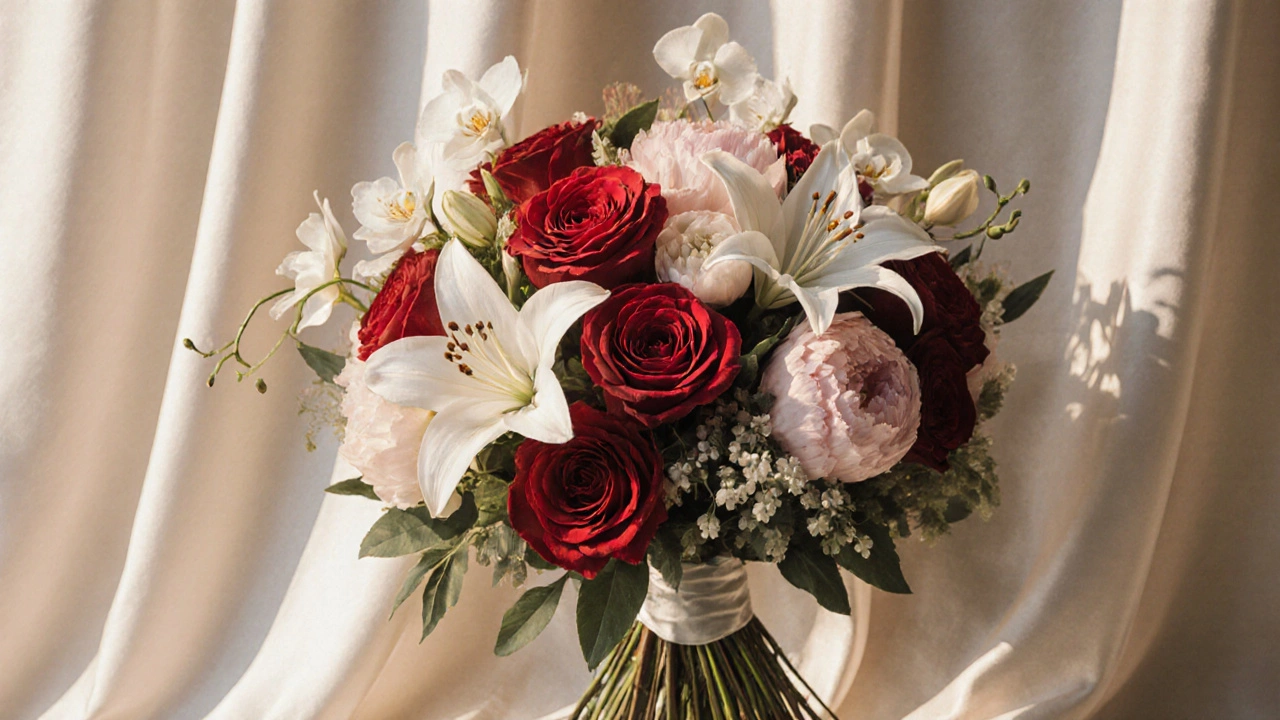Flower Symbolism in Weddings
When planning a wedding, understanding flower symbolism, the language of flowers that conveys emotions, traditions, and personal stories can turn a simple bouquet into a powerful statement. Also known as floriography, it links specific blooms and colors to feelings like love, hope, or remembrance. Flower symbolism isn’t just a romantic notion; it guides choices for bridal bouquets, ceremony décor, and reception centerpieces, helping couples reflect their personalities and cultural heritage.
One of the most common ways flower symbolism shows up is in the bridal bouquet, the handheld arrangement a bride carries down the aisle. Historically, bouquets were packed with herbs and flowers believed to ward off evil, but today they act as a visual love note. Selecting roses for romance, lilies for purity, or sunflowers for joy lets you whisper a secret to your guests without saying a word. The bouquet’s shape—cascade, round, or hand‑tied—adds another layer of meaning, indicating elegance, abundance, or intimacy.
How Color, Culture, and Arrangement Shape Your Floral Story
The color palette you pick is a key part of wedding flowers, all blossoms used throughout the ceremony and reception. Red traditionally signals passionate love, while white speaks of purity and new beginnings. Soft pink offers gentle affection, and deep purple conveys royalty or mystery. Understanding these nuances helps you design a cohesive look that aligns with your wedding theme. For example, a garden‑style wedding might blend pastel peonies with sage‑green foliage to evoke a romantic, whimsical feel, whereas a black‑tie affair could feature bold, dark dahlias paired with gold accents for drama.
Beyond color, cultural traditions influence which flowers are considered lucky or appropriate. In many Asian weddings, peonies and orchids are prized for wealth and longevity, while in Mediterranean celebrations, bougainvillea and lavender bring a breezy, sun‑kissed vibe. Knowing the cultural symbolism can help you honor family heritage and add depth to the visual narrative.
Finally, the art of floral arrangements, the design and placement of flowers in bouquets, arches, and tablescapes brings all the symbolism together. A well‑planned arrangement balances form, texture, and meaning. Incorporating greenery like eucalyptus adds freshness and whispers of eternal life, while using seasonal blooms ensures the flowers are at their peak freshness—and your budget stays in check. Modern couples often mix exotic blooms with classic roses to create a fresh, personalized story that feels both timeless and uniquely theirs.
All of these elements—flower choice, color, cultural context, and arrangement style—interlock to form a vivid, emotive backdrop for your wedding day. Below you’ll find articles that dig deeper into each aspect, from the history of bouquets to budgeting tips for floral design, giving you the tools to make informed, heartfelt decisions for your celebration.

- Oct, 8 2025
- Comments 0